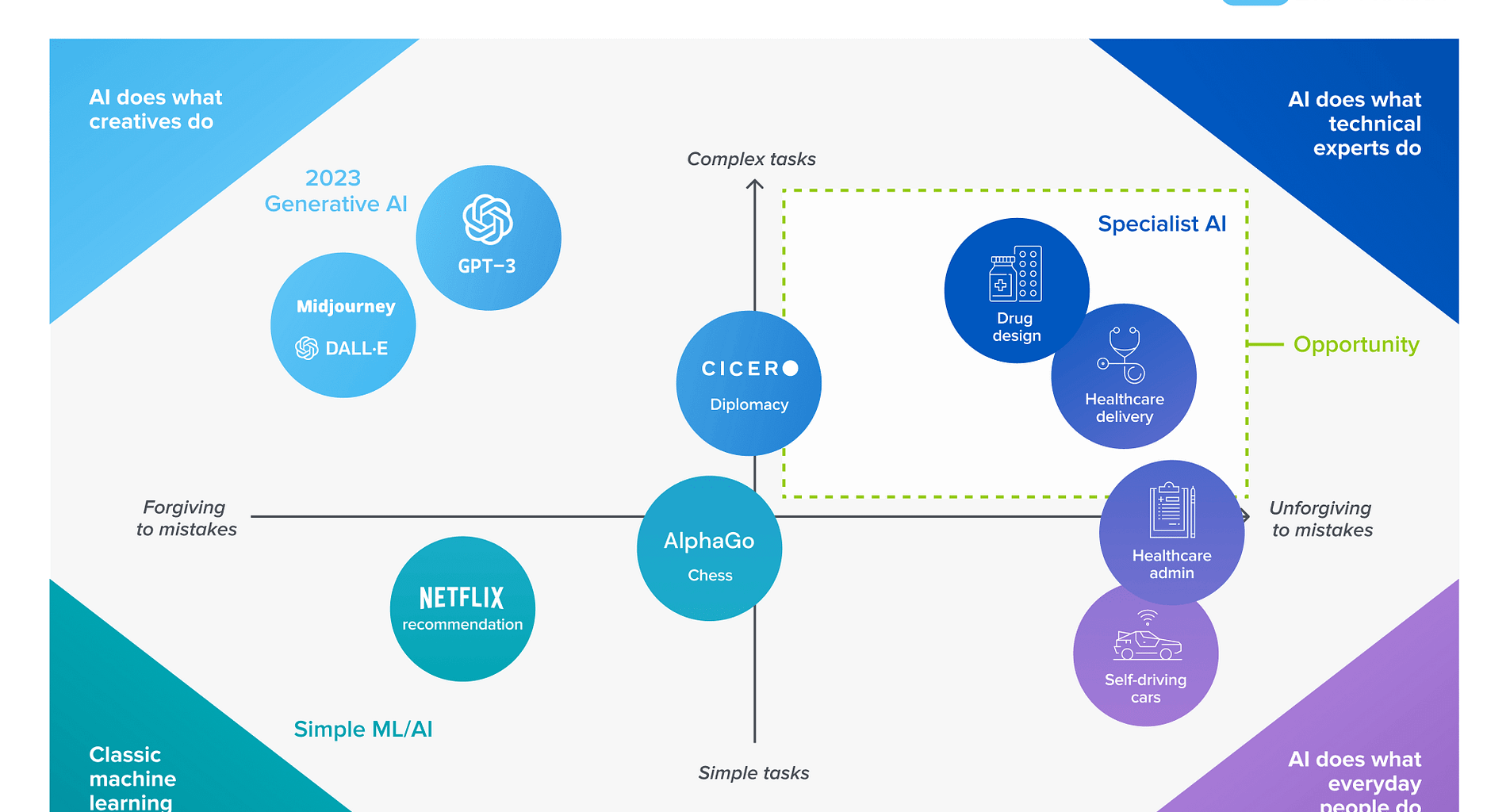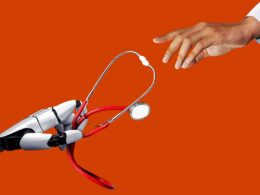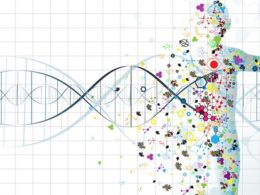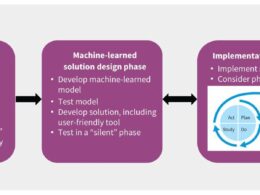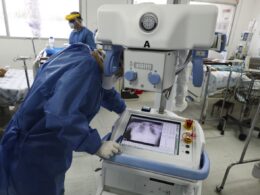The Health Institute
research and strategy institute for
in-person health strategy and
digital health strategy
Joaquim Cardoso MSc
Chief Research and Editor
for the The Health Institute — Knowledge Portal
Chief Strategy Officer (CSO)
for the The Health Institute — Research and Strategy
Senior Advisor
for Boards and C-Level
July 5, 2023
Drug design and healthcare delivery have been hindered by a decades-long increase in costs, reaching approximately a quarter of US GDP.
- The goal is to transition from this increasing cost curve to a decreasing cost curve by leveraging AI and turning human-driven services into compute.
AI has progressed from simple tasks to generative AI methods that can produce text, images, and complete complex tasks, although with occasional mistakes.
- AI-driven co-pilots can greatly scale skilled labor or uplevel less-skilled labor in life sciences and healthcare, integrating AI into existing workflows.
- Advances in biology and healthcare, combined with the renaissance in algorithms and compute power, enable the use of AI in tackling healthcare and drug design challenges.
AI can extend the abilities of existing providers, reduce costs, improve outcomes, and mitigate clinician burnout in healthcare.
- AI can be interrogated and understood, unlike human reasoning, making it a valuable tool in healthcare.
Specialist AI companies, built by specialized teams, are needed to address specific domains in healthcare and life sciences.
- Teams with expertise in AI, healthcare, product development, and go-to-market strategies will be well-positioned to lead and succeed in this new era.
AI has the potential to transform healthcare by empowering nurses, providing always-on companions for patients, and advancing therapeutics beyond human capabilities.
The new industrial revolution driven by AI is underway, and investing in AI companies is a promising opportunity for growth and impact.
DEEP DIVE
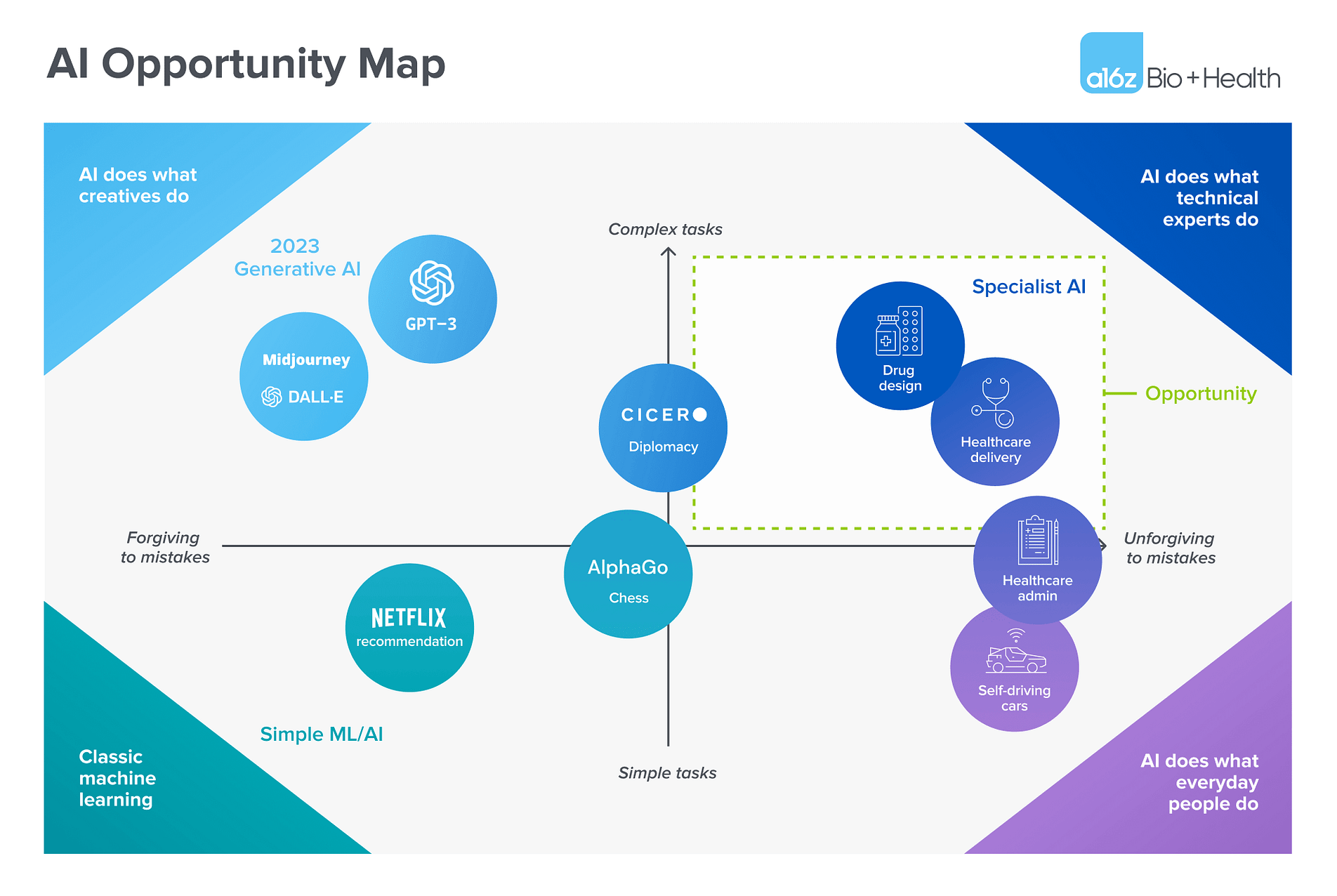
AI at the Intersection: The a16z Investment Thesis on AI in Bio + Health
A16Z
by Vijay Pande
A Tale of Two Exponentials
Harnessing Moore to combat Eroom
In contrast, drug design and healthcare delivery sit on Eroom’s law , coined from the reverse of “Moore.” These industries have suffered from a decades-long in , which has reached such extreme levels that healthcare costs are reaching approximately a quarter of US GDP (and rising). Between rising labor costs, clinical trial costs, administrative costs, increasingly hostile payor-provider relations, and more, therapeutics and healthcare costs are following the wrong curve.
Turning services into compute
Given that one is exponentially decreasing and the other is exponentially increasing, the obvious goal is to transition from Eroom’s law to Moore’s law . But how is that possible? One would have to turn human driven services (i.e., delivery of care services) into compute (i.e., commoditizing a service through technology). This is precisely what we’re seeing with AI .
This transformation begins with less-complex, one-off models (typically referred to as machine learning) to do simple tasks that are forgiving to mistakes; for example, Netflix using AI to recommend shows.
As AI becomes more sophisticated, we’re increasingly moving into new categories of possibility.
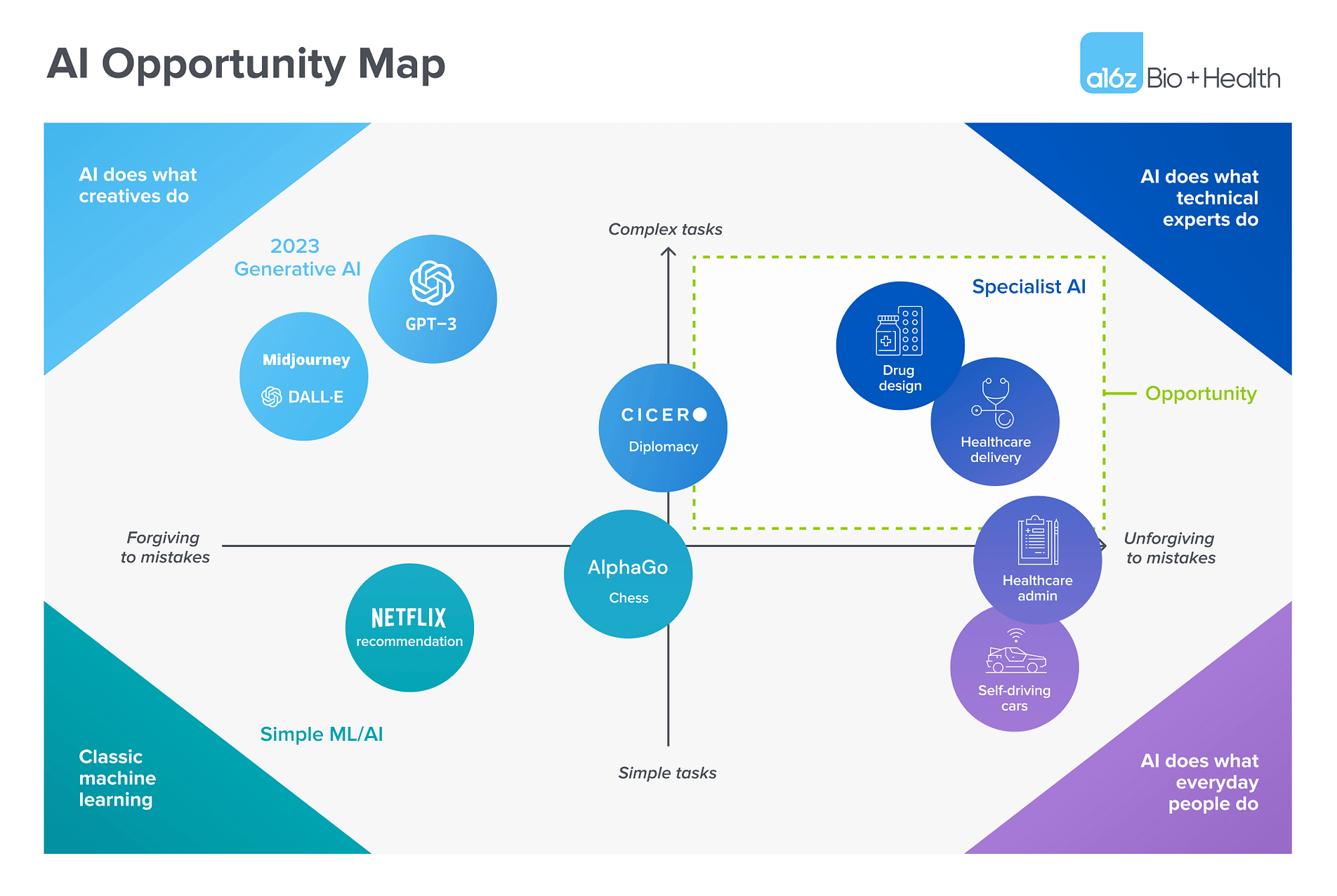
Generative AI methods can now produce text and images, as well as complete complex tasks, albeit with mistakes (aka hallucinations). For example, chatGPT can produce English answers to questions, but occasionally fails spectacularly on certain questions, “ hallucinating “ made-up answers.
Over time, this progression leads to the potential for AI-driven co-pilots for life sciences and healthcare that greatly scale skilled labor or that uplevel less-skilled labor. For example, AI could suggest answers or ideas, allowing trained humans to choose the best ones, curating results and skipping over any wrong answers. This approach integrates AI naturally into existing workflows.
In time, the ratio of human work lessens, eventually getting closer to full automation even in areas which require a human specialist-i.e., where small mistakes can have disastrous effects-but likely not without a human somewhere in the loop, especially in areas that are particularly unforgiving to mistakes, such as diagnoses, drug prescriptions, or medical procedures. Developing AI that can succeed at these specialist tasks and not be tainted by critical errors is an outstanding area for the future of AI development along the path towards AGI, and the natural place where future AI advances will ultimately have the greatest impact on life sciences and healthcare.
A renaissance in algorithms and compute power combined with advances in biology and healthcare
In life sciences, advances in gene editing, cellular biology, stem cells, robotic experiments, and more have allowed scientists to manipulate biology in previously unheard of ways. These advances have enabled but also with a newfound consistency , both key elements for connecting with AI. Moreover, with AI becoming in life science experiments, there is a strong feedback loop where the experiments improve the AI’s predictive power, which in turn improves the experiments.
Similarly, healthcare is going through a renaissance in its utilization of technology. The sheer enormity of the cost of healthcare weighs heavily upon the field, and innovators are for technology which can improve outcomes and lower costs. The shift towards value based payment models , in which proactive patient and provider engagement is paramount, is also a tempting tailwind that further creates deep utility for AI in healthcare.
Underlying all of these advances is an immense amount of computing and data storage, which has only recently become possible. For the first time, a renaissance in algorithms has been married with the pure compute power to test, iterate, and run these programs.
Implications: Tackling Our Greatest Challenges
Simply put: We have the opportunity to use AI to tackle our greatest challenges in healthcare and drug design.
First, the cost of healthcare. The exponential increase in cost stems partially from the need for highly trained staff (PhDs, MDs, nurses, etc)-especially as the cost of skilled labor is growing far faster than inflation. As AI becomes increasingly able to function as a technical expert, there are opportunities to extend the abilities of our existing providers to deliver care at a much lower cost. If AI can be implemented with empathy, it can engender engagement and maintain compliance with clinical recommendations, as well as mitigate clinician burnout.
Indeed, the regulatory framework in life sciences and healthcare tests everything (therapeutics, devices, etc) for efficacy and adverse effects. And for those who fear that AI is a black box, we argue that AI can be completely interrogated and, given enough time, any AI can be understood in detail; ironically, human reasoning is the true black box in healthcare.
The New Industrial Revolution Is Now
To solve our greatest challenges in healthcare and life sciences, we need specialist AIs in specific domains more than an overarching AI that can do anything an average human can do. We imagine an array of specialist AI companies, designed with specialized large models, built by specialized teams.
Builders will need to understand both a) how to exploit the latest and greatest AI tech, and (perhaps more importantly) b) how to commercialize a product or platform in biopharma and healthcare with a defensible product and go-to-market strategy. As such, we believe teams with depth in both (scientists, AI experts, healthcare builders and operators, product and go-to-market experts) will be best poised to lead and win in this new era.
We see AI turning every nurse into an inpatient superhero and pushing the industry to consider what it would mean if every patient had an always-on, professionally trained companion that could converse for as long as they want, at a cost of just cents per hour. On the therapeutics side, we’ve been following the development of therapeutics aimed at increasing healthspan; AI-enabled research into better antibody therapies to tackle some of humanity’s worst conditions; and R&D that goes beyond the abilities of human scientists.
We’ve been investing in such groundbreaking companies for years-you can see a full list of our AI and other investments here -and our conviction is growing. The new industrial revolution is here, and we’re excited to play a role in its development.
The views expressed here are those of the individual AH Capital Management, L.L.C. (“a16z”) personnel quoted and are not the views of a16z or its affiliates. Certain information contained in here has been obtained from third-party sources, including from portfolio companies of funds managed by a16z. While taken from sources believed to be reliable, a16z has not independently verified such information and makes no representations about the enduring accuracy of the information or its appropriateness for a given situation. In addition, this content may include third-party advertisements; a16z has not reviewed such advertisements and does not endorse any advertising content contained therein. This content is provided for informational purposes only, and should not be relied upon as legal, business, investment, or tax advice. You should consult your own advisers as to those matters. References to any securities or digital assets are for illustrative purposes only, and do not constitute an investment recommendation or offer to provide investment advisory services. Furthermore, this content is not directed at nor intended for use by any investors or prospective investors, and may not under any circumstances be relied upon when making a decision to invest in any fund managed by a16z. (An offering to invest in an a16z fund will be made only by the private placement memorandum, subscription agreement, and other relevant documentation of any such fund and should be read in their entirety.) Any investments or portfolio companies mentioned, referred to, or described are not representative of all investments in vehicles managed by a16z, and there can be no assurance that the investments will be profitable or that other investments made in the future will have similar characteristics or results. A list of investments made by funds managed by Andreessen Horowitz (excluding investments for which the issuer has not provided permission for a16z to disclose publicly as well as unannounced investments in publicly traded digital assets) is available at https://a16z.com/investments/. Charts and graphs provided within are for informational purposes solely and should not be relied upon when making any investment decision. Past performance is not indicative of future results. The content speaks only as of the date indicated. Any projections, estimates, forecasts, targets, prospects, and/or opinions expressed in these materials are subject to change without notice and may differ or be contrary to opinions expressed by others. Please see https://a16z.com/disclosures for additional important information.
Originally published at https://a16z.com on June 21, 2023.




